
info@apandatour.com
+86 28 8521 4086

Time: 2020-10-20 Author: Bella
Initial Impression
Before I participated in the Shennongjia National Park bird race, I have a very misty impression of Shennongjia. My impression of Shennongjia still stays on some general information such as the legendary story of tasting hundreds of herbs by Shennong, the early Chinese emperor, the savage, the distribution area for Golden Snub-nosed Monkey, and the meeting place of southern and northern species in China. We felt so lucky to be invited to participate in the second Shennongjia National Park bird race dated from October 11-15. Thanks to this invitation, we were able to visit this mysterious land and could add some beautiful elements to our imagination of paradise. Certainly, it was such a great bird-watching experience here. Though being covered by misty weather during the three-day bird race, we still recorded 111 effective bird species and won the championship as a team with the largest number of bird species recorded. Moreover, we successfully recorded two new species in Shennongjia, namely Scaly-breasted Cupwing and White-tailed Warbler.

▲ A reward was granted to our team by Professor. He Fengqi
During our three-day bird race, the most exciting moment happened in the high elevation areas of Shennongjia and Dajiuhu Lake, in the misty air, a Temminck's Tragopan and Barred Laughingthrush ignored our observation. We encountered Three-toed Parrotbill and Cetti’s Warbler in Shennong Valley and Black-browed Reed Warbler. However, we did see many birds in low elevation areas like Guanmenshan and Muyu. On 14th, we saw Rufous-bellied Niltava, Carrion Crow, and Collared Crow after a whole afternoon hike, we did not get other new species, even missed some common birds like Eurasian Tree Sparrow and Oriental Magpie Robin. This proves what the Chinese proverb says, you lose but you gain, vice versa.
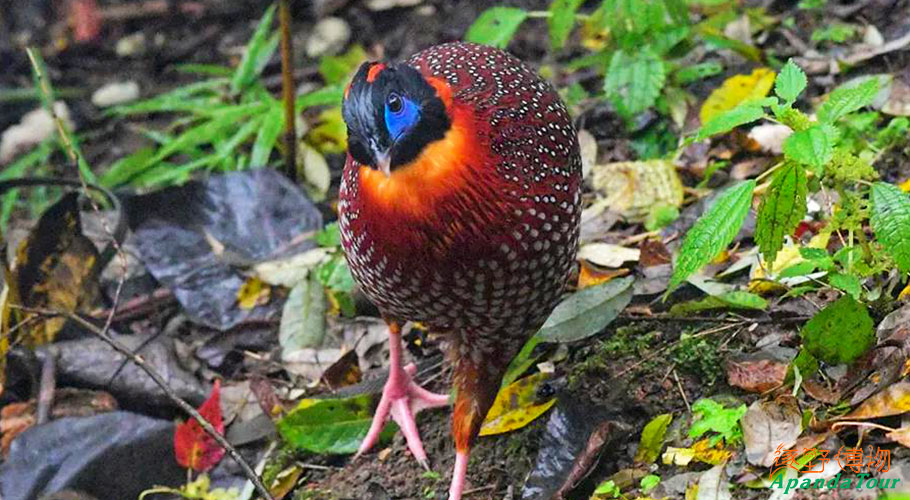
▲ Temminck's Tragopan
Now we have returned to Chengdu, we still feel the excitement when we remember the time during the race. The memory brings us back to the vast and colorful forest, where we search for birds with our team members. So we write this article for this event.
Day 1: Chengdu-Muyu
Shennonjia is an exciting but distant destination especially for us living in Chengdu. With the transportation strategies sent by the detail-driven host, we decide to take the bullet train from Chengdu to Yichang, and they take a bus from Yichang to Muyu after some study. The fatigues from the long ride can not press down the excitement from our hearts. Once we meet after departing respectively from Chengdu and Chongqing, we started chatting about birds in Hubei province. Unlike the grand snow-capped mountains in western Sichuan, the mountains in Shennongjia are mild and beautiful with Karst peaks going through them. Decorated by the diverse colors at the beginning of Autumn, it looks like a roll of pictures spreading out in front of us. All this breath-taken scenery turns into one word "wow" but in my teammate, his excitement becomes "The quiet forest sitting on a mountain slope, the birds chirping on tree top". These became our opening remarks for our visit to Shenongjia and a touch of color to our one-day ride.
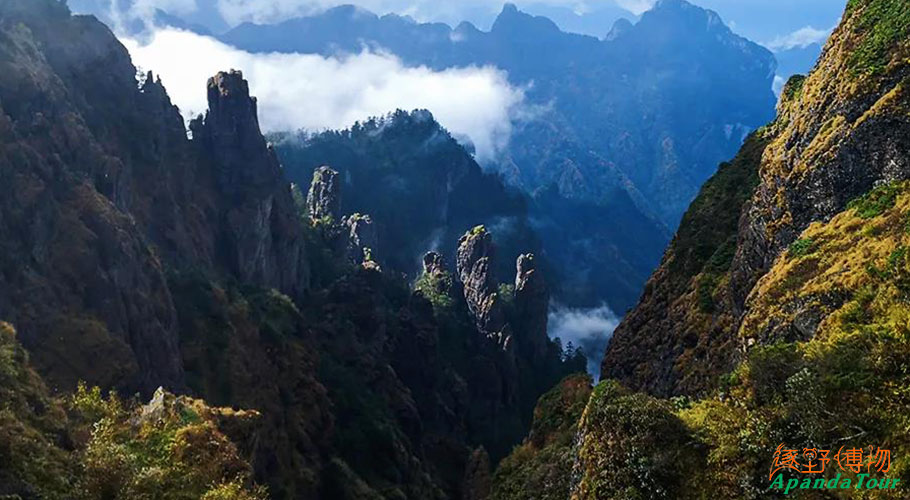
▲ The scenery at Shennong Valley
The race organizer had arranged very well including hotel check-in, dinner, and preparatory meeting. Even things like rubbing alcohol, and surgery masks had been prepared. Everything went well.
Day 2: Opening Ceremony
The Covid-19 swept over the whole world. After being locked down from the beginning of the year, people got very little chance to go to other places as the tourism industry has been heavily impacted by the pandemic. So meeting in this event became something like an annual celebration. The opening ceremony is bustling with noise, happiness, and excitement.

▲ Group photo during the bird race
We soon got to the first race area, the Shennongding. After some search in a valley parking lot, we saw some common birds such as Long-tailed Minivet, Eurasian Nuthatch, Black-bibbed Tit, Mountain Bulbul, and Yellow-browed Warbler. In the discussion about the routes choices, we took the principle of embracing whatever we got and making the best use of our time, we decided to go to Hongping to see the fall leaves. This decision unexpectedly enabled us to see three-star birds(reveal in later part). The gorge became narrower and narrower while we headed on toward Hongping. This was not a good sign for looking for birds. Eventually, we saw a gradual slope ahead and a flock of swifts was darting in the sky. We decided to take a walk along the road, though it was drizzling. Without hesitation, we brought our binoculars and started walking. Within twenty minutes, we regretted that we did not bring our camera. We used our binoculars to observe the darting swifts in the sky and confirmed they were Himalayan Swiftlet. We decided to walk on. Suddenly, we heard a monosyllable call coming from the roadside, we started our search. "Look, there". We saw a dark bird hopped out of bushes and came out directly in our sight without anything standing in-between, moving quickly among the blossoming aster flowers. It was a Scaly-breasted Cupwing. In face of such nice birds with beautiful backgrounds, we were helpless. It’s lucky that our driver quickly ran back to our car and brought back our camera. So we had this charming picture.
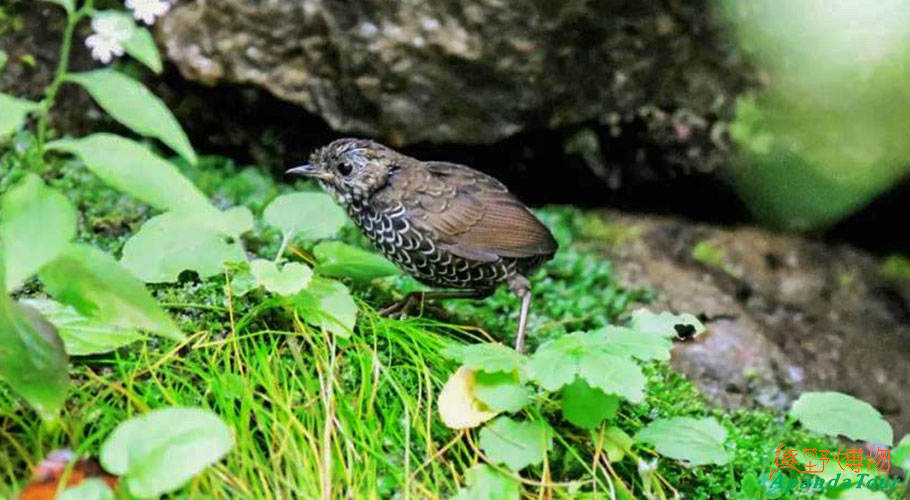
▲ Scaly-breasted Cupwing
When we moved toward Hongping, our luck was more than that. Our persistence to see the fall leaves made us heading further toward Tianyan. The mist became thicker and thicker. It would be hard to tell the people from domestic animals in a distance of more than 5 meters. Though being upset in our hearts, we still wanted to go on with the mindset of since we were here, we searched the slope closely. "Temminick’s Tragopan, Barred Laughingthrush!" Through the heavy mist, we could see two female Temminick’s Tragopans and two Barred Laughingthrushes. It seems that they did not care much about our appearance, walking around and feeding on the ground. That the birds are no longer afraid of people is a reward from long-time efforts input into the conservation.

▲ Barred Laughingthrush
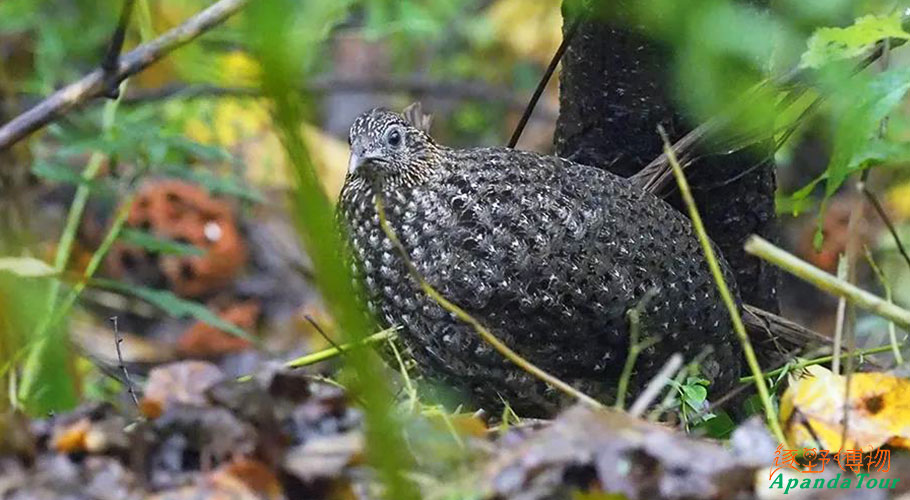
▲ Temminck's Tragopan (female)
We followed them slowly. At this moment, the mist lifted a little bit. Another outline appeared in front of us and became gradually more and more clear with bright red color. It was a male Temminck's Tragopan.

▲ Temminck's Tragopan(male)
Searching around, we found two white-collared yuhinas perching together on the branch, each one showing a leg forming symmetric pair.
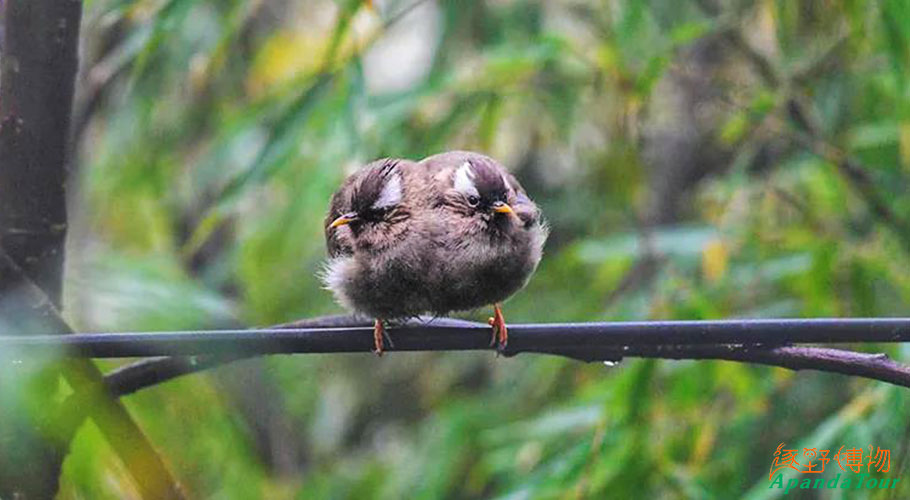
▲ White-collared Yuhina
By now we have made a perfect conclusion in Hongping for fall leaves. In the following two hours we drove to Dajiuhu through a heavy mist. We made a short stop in Taiziya, but we did not see many birds except a Yellow-bellied Bush Warbler.
Day 3: Dajiuhu Lake
Today we went to Dajiuhu Lake and saw a significant increase in our bird list. Upon our arrival at the lake area, we heard bird calls. We decided to take a walk because of the lots of bird calls from the forest but they stayed high, so we searched thoroughly the lakeside bushes and saw Common Stonechat, Little Bunting, and Buff-throated Warbler. We continued to walk, scared off a flock of Eurasian Teal. At this time, some Little Egret and Chinese Pond Heron flew over us.“Raptor!” We saw a raptor diving to the ground to capture prey in distance. Observing closely, we saw an Eastern Buzzard caught something. He ate the prey quickly and left. Then a Northern Goshawk flew in, followed by the appearance of other raptors coming one after another such as Eastern Marsh Harrier, Hen Harrier, Golden Eagle, and Black Kite.

▲ Black Kite
We walked on along the lake. Here I was impressed by a small ground, I would like to call it "pheasant ground". We heard the pheasant calls before we got there. Before we stepped into the ground,a big bird was scared off. "Ring-necked Pheasant", the only thing we spoke out, we heard the Ring-necked Pheasant took off one after another and disappeared in the woods and grasses. We were speechless. After some estimation, we saw about 8-10 male Ring-necked Pheasant. On our way ahead, we encountered Ring-necked Pheasant several times, but not exciting as the first encounter.
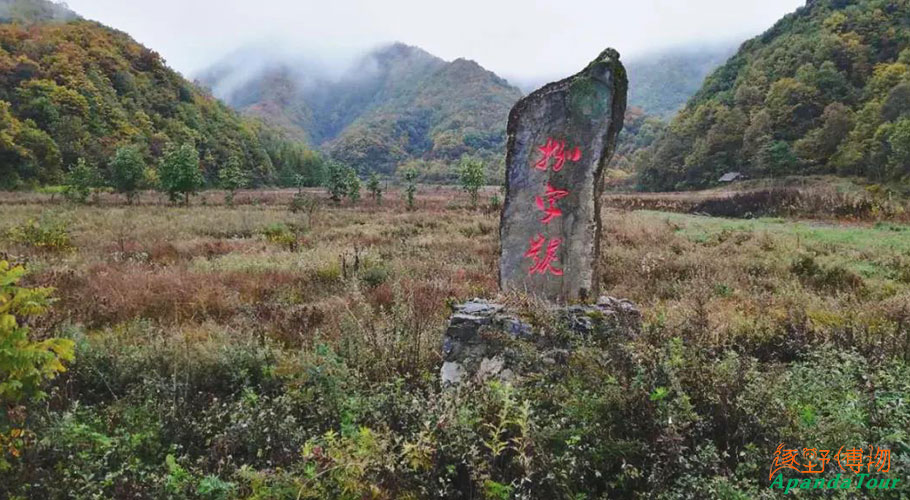
▲ Natural Scenery in Shennongjia
We searched along the way and saw Chestnut-flanked White-eye, Streak-breasted Scimitar Babbler, White-throated Laughingthrush, Chinese Babax, Chinese Black Bird, Yellow-throated Bunting, Brown-breasted Bulbul, and Taiga Flycatcher. In the roadside bushes, we spotted a Brown Bush Warbler. It is not so easy to identify the bird without the help of calls during the non-breeding season. The color differences between its wings and body feathers and yellow base of the lower beak can be taken as identification features.
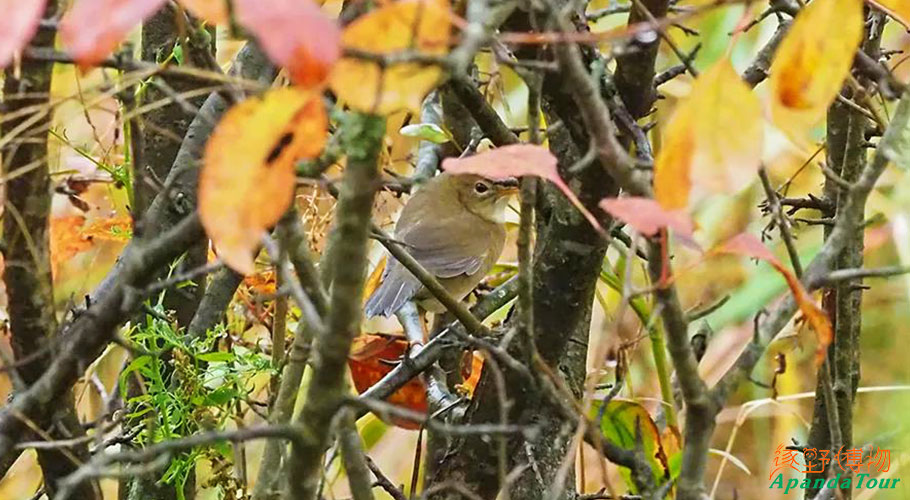
▲ Brown Bush Warbler
After searching for forest birds, we turned to the lakeside. Everything our eyes could reach was beautiful scenery, it’s a great experience looking for birds here. We searched thoroughly in the dense reed clusters and got many surprises. Black-browed Reed Warbler is pretty vigilant, only occasionally reaching out their heads for several seconds. His distinctive black brown betrayed his identity. Dusky Warbler, Black-faced Bunting, and Chestnut-eared Bunting appeared one after another from the grasses. We took a short break by a small lakeside table, imaging we were drinking a cup of hot coffee in the cold wind. At that moment, it happened a Yellow Bittern flew out of the reed clusters near us and dropped in. While I was wondering how to see this bird again, I heard the call from my teammate, I ran to them and saw a Dollar Bird. Though perching high on the tree twig against the light, we had no problem enjoying his elegant plumage.
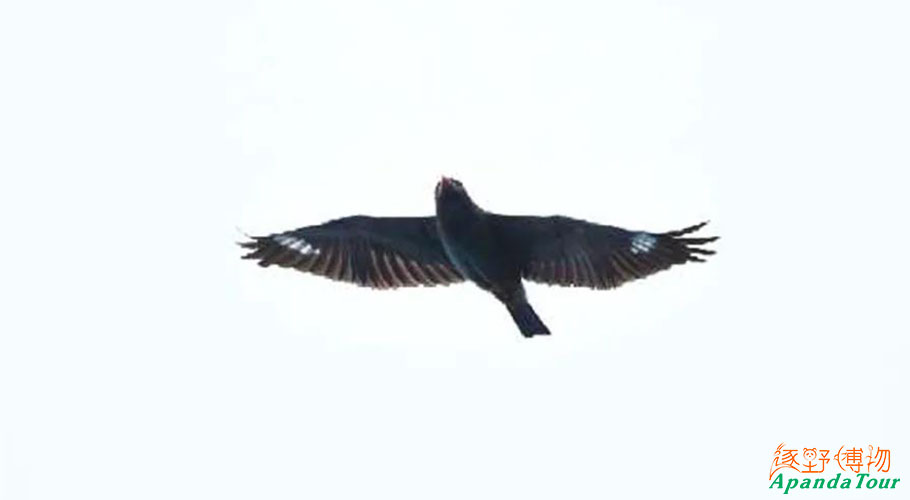
▲ Dollar Bird
Everything went well until we saw a plover dropped in a place beyond the reach of our binoculars until we were not sure whether the ducks in distance were Mallard, Spot-billed Duck or Donald Duck, we remembered our dialogue in Chengdu before we left, “Shall we bring a spotting scope?” Maybe not necessary!
In the afternoon, we went to Taiziya. To our surprise, we had used all our luck in Dajiu Lake. When we arrived at Taiziya, it was foggy. Despite this, we still decided to take a walk. Though we were told by other participants, there were no birds, we continued. No surprise, we saw zero birds. Fortunately, we saw Great Parrotbill and White-crowned Forktail before we left this place.

▲ Great Parrotbill in heavy fog
Day 4: Shennong Valley to Guanmenshan
Based on our years of bird-watching in high-elevation areas in Sichuan, we believed that we should be able to find some alpine birds in the good forests of Taiziya. Considering we went there all in the afternoon the past two days, it was always misty with low visibility and difficult to find a bird. After discussion, we decided to went there in the morning on the fourth day while the fog still stayed in the middle part of the mountain. We hoped to search for some alpine birds in the direction of Shenongding, and look for low elevation birds in the afternoon. By the time we arrived at Shennonggu, the clouds stayed low, we took our time to search along the road, and successfully added the following birds to our list Golden Bush Robin, White-browed Bush Robin, Vinaceous Rosefinch, Coal Tit, and Rufous-vented Tit. The fog getting higher and higher, we stopped birding and climbed to the platform to take scenery shots. While we were taking scenery photos, we heard some movements coming from the bamboos followed by familiar bird calls, we could not figure out exactly what it was, so we decided to stay a little longer. This decision did not let us down, very soon the bird which had made the call flashed in the nearby bamboo cluster. Though the bird only gave us several seconds, it was long enough for us to recognize its typical feature, the brawn head top, greyish breast, and small body size,it was our familiar Grey-side Bush Warbler!
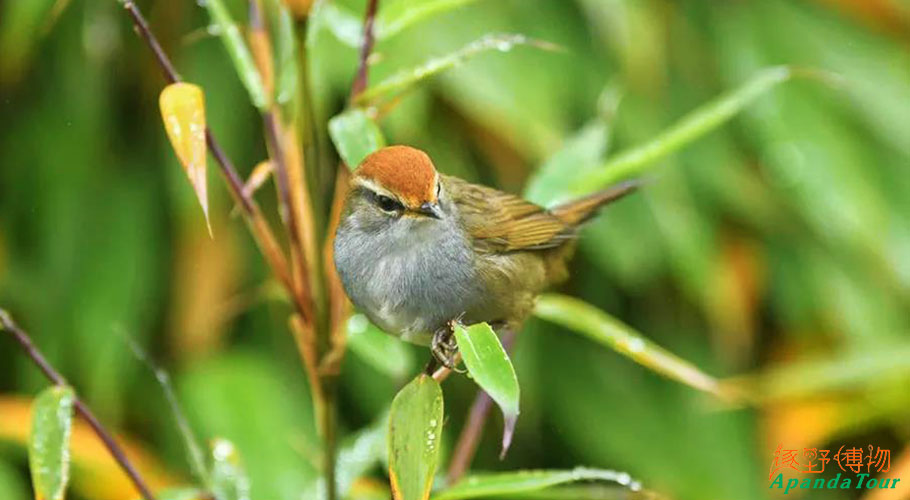
▲ Grey-side Bush Warbler
We saw this bird in the high elevation area of Labahe Nature Reserve. That explained why we were so familiar with its calls. Because we missed the typical part at the end of the call, we failed to recognize it. We hoped to take a photo as our proof of seeing this bird, we waited for a longer time. It was worthwhile, we not only got clear shots of Grey-sided Bush Warbler and we even spotted a flock of Three-toed Parrotbill.
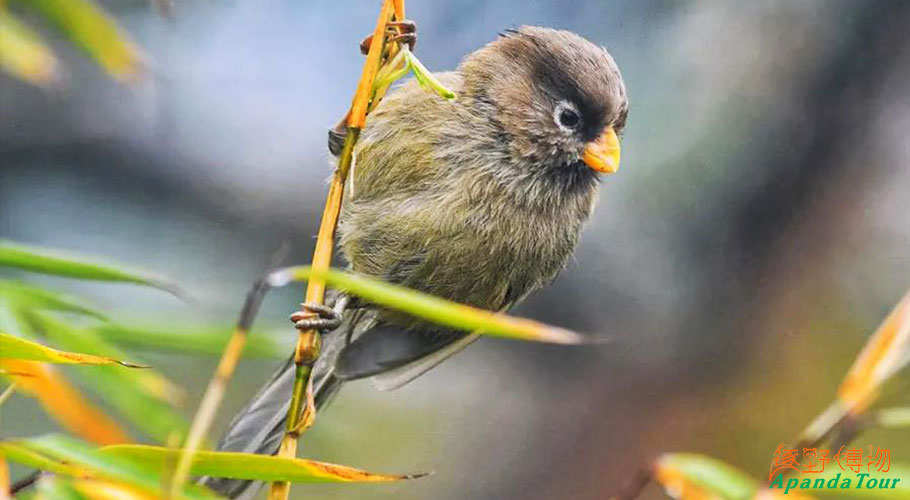
▲ Three-toed Parrotbill
The fog in Shengnonggu came very quickly. In a short period of five minutes, it would be hard to tell people apart from domestic animals. So we decided to move to lower elevation areas. We went to Dalongtan and Guanmenshan, but saw few birds. In Dalongtan we saw Spotted Laughingthrush, Grey-crested Tit, Sichuan Leaf Warbler, Collared Finshbill, and Little Forktail. We saw even fewer birds in Guanmenshan, only Rufous-bellied Niltava in our two hours of hard search. It was close to the time limit of the race, we still had lots of common birds not seen, for example, Eurasian Tree Sparrow, and Oriental Magpie Robin, so we decided to search the nearby farmlands. In a rubbish-dumping site recommended by our driver, we saw Carrion Crow and Collared Crow but no Eurasian Tree Sparrow. It was our first time to have Eurasian Tree Sparrow as a difficult species and we turned to farmlands again but without discovery. We realized that Murphy's laws did exist. After some struggling, we returned to our hotel and accepted the cruel fact that we failed to see a Tree Sparrow. We sorted our notes and prepared for the defense.
Before the defense time, we heard the call of Himalayan Owl from the back of the village where we stayed. After finish our defense, we decided to climb up to the mountain to try but one of my teammates said calmly, I had seen and photographed this bird before and walked back to his room. With a mindset of just having a try, we did not go with high expectations. Taking our binoculars and flashlight, we climbed up the mountain(as we normally did for an owl search). It did not take long when we saw a Himalayan Owl on a power line at a close distance. This again proved the bird-watching law, good luck with birds when no camera at hand. We regretted not bringing a camera but were too lazy to go back to our room for the camera. We used a mobile phone to take a highly blurred photo through our binoculars and get our bird race friends here to come to help us by sending them the photo.

▲ The highly blurred Himalayan Owl
Unfortunately, the bird flew away 3 minutes before the arrival of our bird race friends. We took the arrived friends searching around the village. Soon we saw two Himalayan Owls at a close distance.
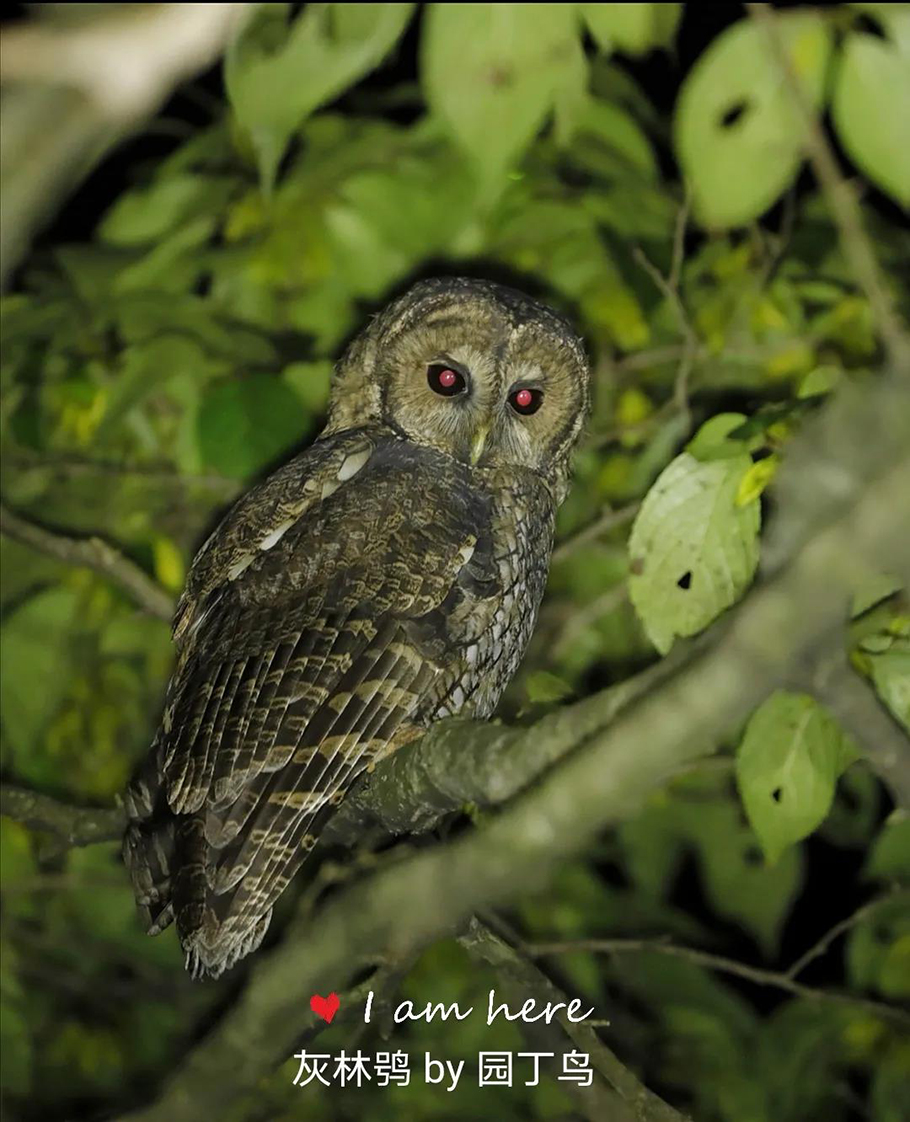
On the return journey, when we talked about the two owls, the early bed teammate showed deaf ears to us.
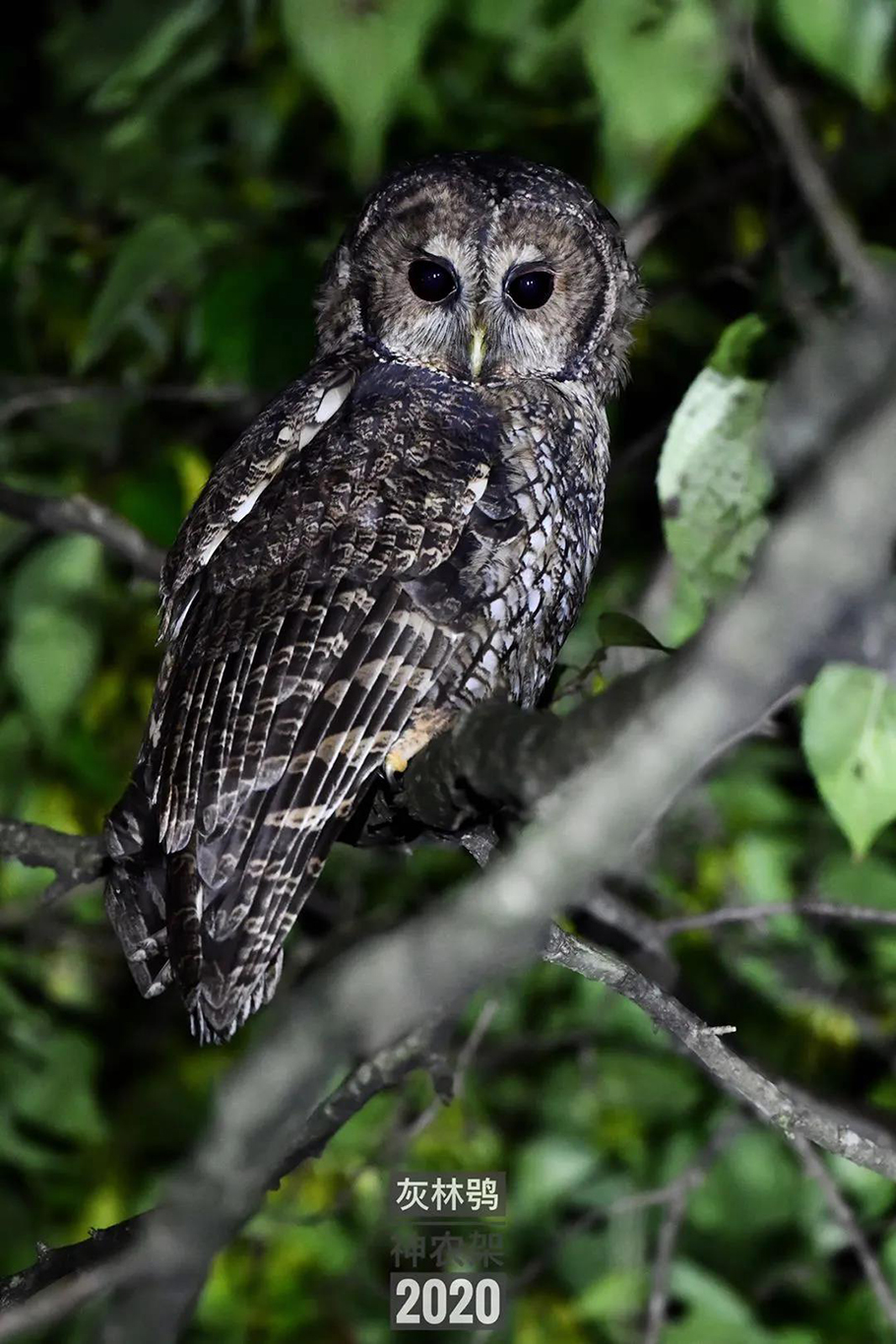
© Linzidale
Day 5: departure
Lots of times, I become superstitious when I start birding. Before departure, I saw a big flock of Eurasian Tree Sparrow on the lawn in front of our hotel, I came to believe the rules again, "Toilet time is good bird time", "Good bird luck when carrying no camera and Murphy’s Law". Everything we have is the best arrangement. Enjoying the birds we encounter can bring us the best joy.
Our bird race friends said good-by one after another in the Wechat group, we were also on our way home, enjoying the beautiful scenery again. Thinking about that we have met and known so many interesting people, we felt so lucky. Toward the end of this article, we would like to express our thanks to the sponsors, organizers, and coordinating units especially, The Wildlife and Plants Conservation Association of Hubei Province, Shennongjia National Park Administration, and The Shennongjia Golden Snub-nosed Monkey Conservation Fund for their supports and hard work. We also look forward to meeting with our bird race friends again and enjoying the exchange of interesting bird stories with them.
Attached is a bird list {on the reference to China Bird-watching Annual Report- China Bird List version 8.0 (2020)}
